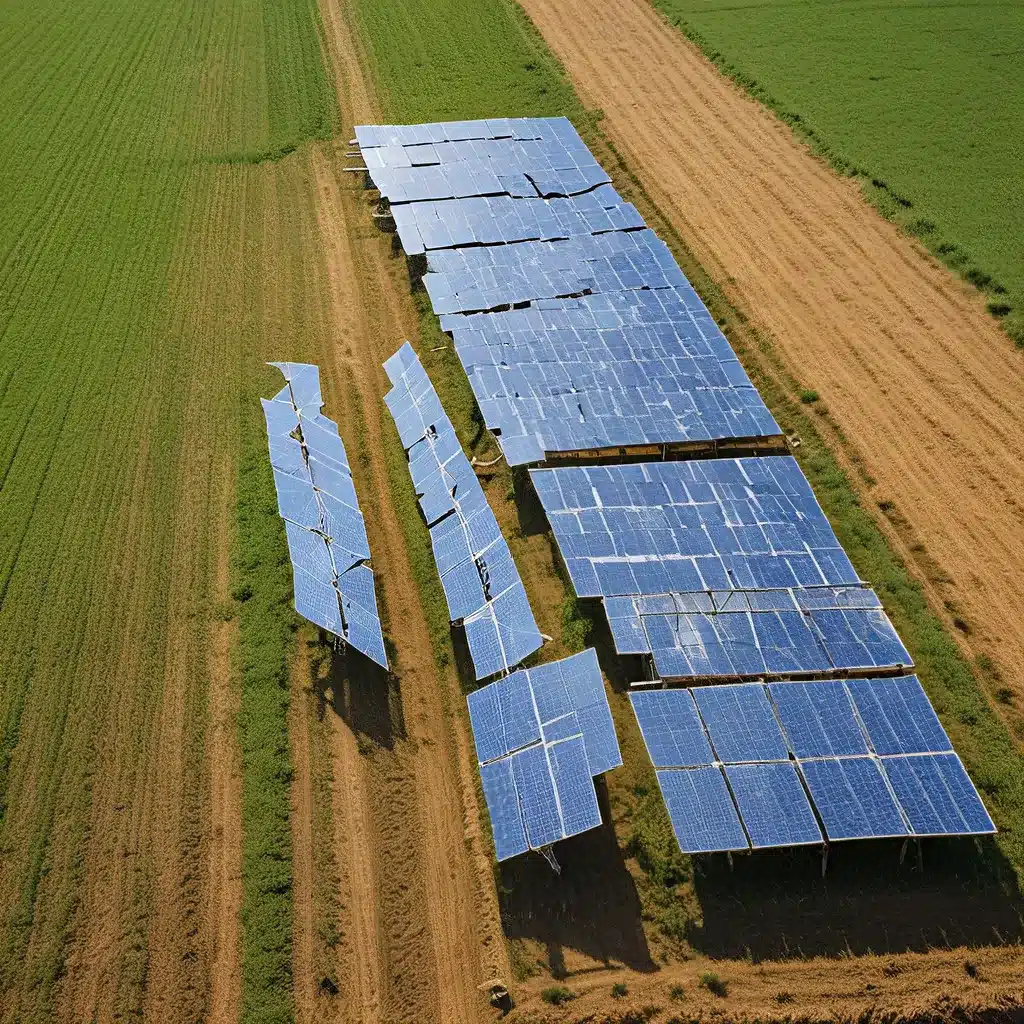
Harnessing the Sun’s Power for a Greener Future in Farming
As a lifelong enthusiast of renewable energy solutions, I’ve always been fascinated by the incredible potential of solar power to transform various industries. But one area that has truly captured my imagination is the integration of solar energy into the world of agriculture. It’s an intersection that holds the promise of a more sustainable, resilient, and environmentally-friendly future for food production.
The Unsustainable Realities of Traditional Agriculture
Let’s start by acknowledging the harsh truth: our current, fossil-fueled agricultural system is a significant contributor to climate change, accounting for a staggering one-third of global greenhouse gas emissions. This sobering statistic highlights the urgent need to rethink and reengineer the way we approach food production.
The modern agrifood system’s heavy reliance on fossil fuels, coupled with the inequitable access to resources, has rendered it unsustainable in the long run. As the world grapples with the escalating impacts of climate change, it has become increasingly clear that we must find innovative solutions to decarbonize the food system, particularly by addressing its energy sources.
The Compelling Case for Renewable Energy in Agriculture
Enter the game-changing potential of renewable energy solutions in the agricultural sector. By harnessing the power of the sun, wind, and other clean energy sources, we can not only reduce the carbon footprint of farming but also create a more resilient and localized food production system.
One of the most promising renewable energy technologies for agriculture is solar power. The integration of solar energy into farming practices, known as “agrivoltaics”, presents a transformative approach that aligns seamlessly with the European Union’s pursuit of the European Green Deal targets for a climate-neutral Europe.
Agrivoltaics: Harmonizing Solar and Agriculture
Agrivoltaics is a groundbreaking concept that involves installing solar panels over or between rows of crops, creating a symbiotic coexistence between energy generation and food cultivation. This innovative approach not only harnesses the sun’s power to produce clean electricity but also enhances agricultural productivity by providing shade for the crops, reducing water evaporation, and moderating the microclimate.
The benefits of agrivoltaics are multifaceted and far-reaching. Farmers can diversify their income streams by generating revenue from both crop harvests and solar energy production. Local communities can enjoy the benefits of decentralized, renewable energy that supports their food security and resilience. And the environment as a whole can breathe a sigh of relief as we work towards a more sustainable and climate-friendly agricultural system.
Overcoming Land Competition Concerns
One of the key concerns surrounding the integration of solar power into agriculture has been the potential competition for land. However, the agrivoltaic approach effectively addresses this challenge by enabling the coexistence of solar infrastructure and traditional farming activities.
Careful site selection and optimization of the solar panel placement can ensure that the land is utilized in a way that maximizes both energy production and crop yields. In some cases, the presence of the solar panels can even improve the microclimate and enhance crop growth, creating a win-win scenario for both energy and food production.
Driving the Transition with Collaborative Efforts
Transitioning towards a more sustainable, renewable energy-powered agricultural sector will require a concerted effort from various stakeholders. Governments, through policy incentives and regulatory frameworks, can play a pivotal role in incentivizing the adoption of agrivoltaic systems and other renewable energy technologies in farming.
Farmers, as the stewards of the land, must be empowered and supported to embrace these innovative solutions. Financiers and investors can provide the necessary capital and resources to facilitate the large-scale deployment of renewable energy infrastructure in the agricultural sector.
The Path Forward: Embracing a Sustainable, Resilient Future
As I delve deeper into the potential of renewable energy in agriculture, I can’t help but feel a sense of excitement and optimism about the future. The alignment of solar power, sustainable farming practices, and equitable access to resources holds the key to unlocking a more resilient and climate-neutral food system.
While the journey ahead may not be without its challenges, I am confident that through collaborative efforts, innovative thinking, and a shared commitment to a greener future, we can power the transformation of agriculture and pave the way for a more sustainable, equitable, and food-secure world.
The future is bright, and it’s powered by the sun’s clean, abundant energy. Let’s embrace this opportunity and cultivate a renewable energy revolution in the world of agriculture. The time for action is now, and the rewards for our collective efforts will be bountiful.

